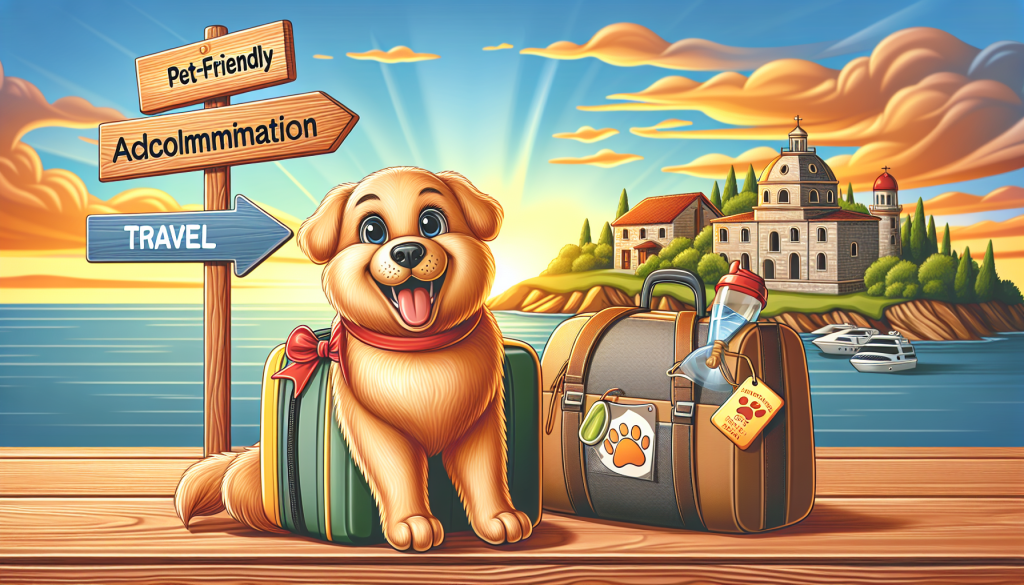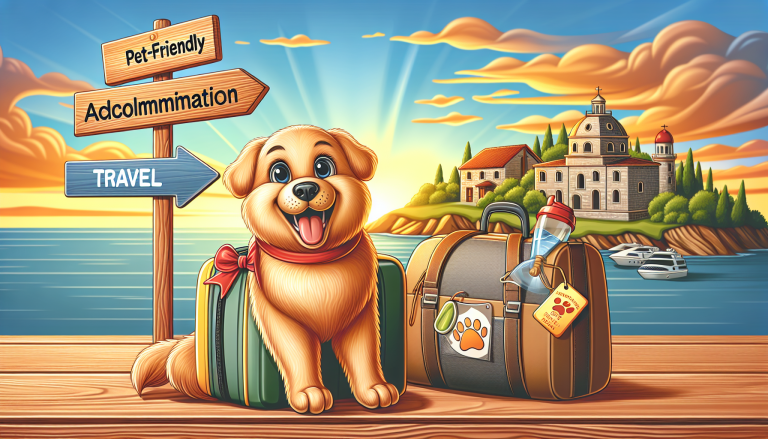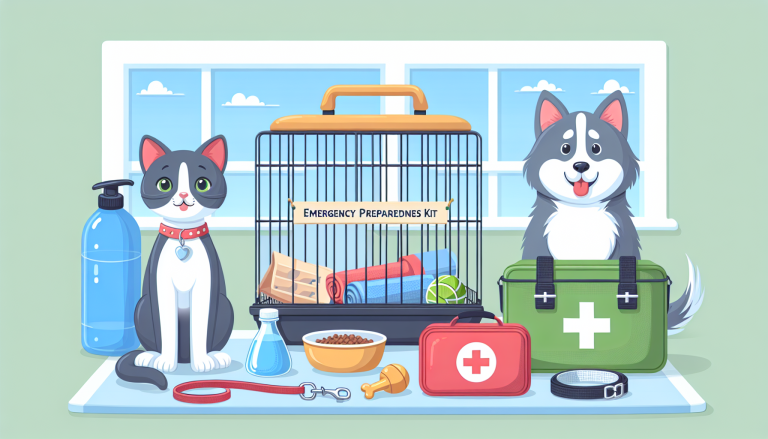Are you itching to hit the road with your furry companion? Look no further! In our “How To Travel With Your Pet: The Complete Guide,” we’ve got you covered from planning to packing, ensuring a seamless journey for both you and your beloved pet. Whether you’re embarking on a short weekend getaway or a long cross-country adventure, this comprehensive guide will provide you with all the necessary tips and tricks to make traveling with your pet a breeze. So grab your leash and let’s get started on creating unforgettable memories together!
Table of Contents
ToggleChoosing the Right Mode of Transportation
Considerations for Air Travel
When it comes to traveling with your furry friend, choosing the right mode of transportation is essential. Air travel can be a convenient option for long distances, but there are a few important considerations to keep in mind. First and foremost, check the airline’s policy on pet travel. Some airlines have specific restrictions or requirements for pets, such as size limitations or breed restrictions. It’s also crucial to make sure your pet is comfortable and secure in an appropriate carrier that meets airline regulations. Additionally, consider the potential stress and anxiety that air travel can cause for your pet and consult with your veterinarian before making any decisions.
Tips for Traveling by Car
Traveling by car can be a great option if you prefer to have more control over the journey and want to bring your pet along for the ride. Before hitting the road, make sure your pet is comfortable in the car and has a secure spot. Consider using a pet seatbelt or a crate to keep them safe during the journey. It’s important to plan for frequent breaks to allow your pet to stretch their legs, use the bathroom, and stay hydrated. Make sure to pack essentials such as food, water, toys, and their favorite blanket to make the trip as comfortable as possible for them.
Preparing for Train or Bus Travel
If you’re opting for train or bus travel, there are a few additional considerations to take into account. Before booking your tickets, ensure that the train or bus company allows pets on board and check if there are any specific requirements or restrictions. It’s essential to have the right carrier or crate for your pet to travel in, as well as a comfortable spot reserved for them. Additionally, be sure to plan for stops along the way to allow your pet to relieve themselves and get some fresh air. Always check the rules and regulations of the public transportation company you are traveling with to ensure a smooth journey for you and your pet.
Ensuring Your Pet’s Safety
Updating Vaccinations and Health Checks
Before embarking on any journey with your pet, it’s vital to ensure that their vaccinations and health checks are up to date. Schedule a visit to your veterinarian well in advance to make sure your pet is in good health and their vaccinations are current. Some destinations may have specific requirements for pet vaccinations, so it’s important to have all the necessary documentation ready.
Choosing an Appropriate Carrier or Crate
When it comes to traveling with your pet, choosing the right carrier or crate is crucial. The carrier should be sturdy, well-ventilated, and comfortable for your pet. Make sure it provides enough space for them to stand, turn around, and lie down. It’s also important to check whether the carrier meets the size requirements of the transportation mode you have chosen.
Securing Your Pet in the Vehicle
If you are traveling by car, securing your pet is one of the most important safety measures you can take. Consider using a pet seatbelt, a crate, or a car barrier to keep them secure and prevent any accidents or injuries. It’s essential to ensure that your pet cannot roam freely within the vehicle, as this can be a distraction for the driver and pose a risk to both you and your pet.
Preparing for the Journey
Packing Essential Items for Your Pet
Just like you would pack your own essentials for a trip, it’s important to pack necessary items for your pet as well. This includes their food, water, toys, bedding, leash, collar, and any medication they may need. It’s a good idea to bring a familiar blanket or toy to provide them with comfort during the journey. Remember to pack enough food and water for the entire trip, as it may not always be readily available, especially during long journeys.
Ensuring Proper Identification
Accidents can happen, and it’s crucial to make sure your pet is properly identified in case they get lost or separated from you during the journey. Make sure your pet has a collar with an ID tag that includes your contact information. Additionally, consider microchipping your pet as an added layer of identification. Ensure that the microchip information is up to date, including your current contact details.
Finding Pet-Friendly Accommodations
If you’re planning on staying overnight during your trip, it’s essential to find pet-friendly accommodations. Many hotels, motels, and vacation rentals now offer pet-friendly options, but it’s always best to call ahead and confirm their pet policies. When booking your accommodation, consider proximity to pet-friendly parks or green spaces where you can take your pet for walks or playtime.
Managing Your Pet’s Comfort
Maintaining a Consistent Routine
Pets thrive on routine, so it’s important to try and maintain a consistent schedule during your travels. Stick to your pet’s regular feeding times, bathroom breaks, and exercise routines as closely as possible. This will help them feel more secure and comfortable in unfamiliar surroundings. Keeping some elements of their daily routine consistent can go a long way in reducing stress and anxiety.
Providing Adequate Exercise
Exercise is crucial for your pet’s physical and mental well-being, especially when traveling. Make sure to incorporate regular exercise breaks into your travel itinerary. Whether it’s a quick walk around the block, a game of fetch, or some playtime in a designated pet area, providing your pet with opportunities for exercise will help them burn off energy and feel more relaxed during the journey.
Managing Anxiety and Motion Sickness
Traveling can be stressful for some pets, particularly those prone to anxiety or motion sickness. If your pet experiences anxiety, consult with your veterinarian about potential calming techniques or medications that can help them cope with the stress of travel. For pets prone to motion sickness, it’s best to avoid feeding them a large meal before the journey and opt for shorter travel sessions with frequent breaks.
Feeding and Hydration on the Go
Planning for Mealtimes
When it comes to feeding your pet during the journey, it’s important to plan ahead. If you’re traveling by air or train, check the specific regulations on feeding pets during the journey. For car travel, it’s best to schedule regular mealtimes with shorter breaks in between. Stick to your pet’s regular feeding schedule as closely as possible to maintain their routine and prevent any stomach upsets.
Choosing the Right Travel Food
During travel, it’s best to stick to your pet’s regular food to avoid any digestive upsets. If you’re unable to pack their regular food, gradually introduce a new brand or type of food a couple of weeks before the trip to allow their digestive system to adjust. Pack enough food for the entire journey, including any potential delays or unexpected circumstances.
Ensuring Access to Fresh Water
Proper hydration is essential for your pet’s well-being, especially during travel. Make sure to bring along a sufficient supply of fresh water for your pet, whether you’re traveling by air, car, train, or bus. You can use spill-proof water bowls or portable water bottles specifically designed for pets to ensure they have access to water throughout the journey.
Keeping Your Pet Entertained
Bringing Favorite Toys or Comfort Items
To help keep your pet entertained and calm during the journey, bring along their favorite toys or comfort items. Familiar scents and objects can provide a sense of security and help alleviate anxiety. Make sure to choose toys that are appropriate for travel and won’t easily get lost or damaged.
Engaging in Interactive Play
Interactive play can be a great way to keep your pet mentally stimulated and entertained during the journey. Pack a few interactive toys or games that you can play together, such as puzzle toys or treat-dispensing toys. This will not only keep them occupied but also tire them out, making them more likely to rest and relax during the journey.
Utilizing Calming Techniques
If your pet is prone to anxiety or gets stressed during travel, utilizing calming techniques can help them feel more at ease. Consider using natural calming sprays, pheromone diffusers, or anxiety wraps to help reduce their stress levels. You can also play calming music or use white noise machines to create a soothing environment for your pet.
Understanding Travel Regulations and Requirements
Researching Destination-Specific Regulations
Different destinations may have specific regulations and requirements when it comes to traveling with pets. Some countries may require quarantine periods, specific vaccinations, or health certificates. It’s important to research and familiarize yourself with the regulations of your destination well in advance of your trip.
Understanding Quarantine and Health Certificates
Certain countries may require pets to undergo quarantine upon arrival. It’s essential to understand the quarantine process and any specific requirements beforehand. Additionally, some destinations may require health certificates issued by a veterinarian to ensure your pet is in good health and free from any contagious diseases. Make sure to check the validity period of these certificates and ensure they’re within the required timeframe.
Navigating Customs and Border Procedures
When traveling internationally with your pet, navigating customs and border procedures can be complex. It’s important to research and understand the specific requirements and documentation needed for customs clearance. Make sure to have all the necessary paperwork, including vaccination records and health certificates, readily available. Being well-prepared will help streamline the process and make your journey smoother.
Tips for Traveling with Different Types of Pets
Traveling with Dogs
When traveling with dogs, it’s crucial to provide them with plenty of exercise before the journey to help tire them out. Make sure to bring along their favorite toys, blankets, and treats to keep them comfortable and entertained. Consider investing in a travel crate or seatbelt harness for their safety. Remember to bring waste bags to clean up after them during pit stops.
Traveling with Cats
Traveling with cats can present unique challenges. Cats are generally more independent and may feel stressed or anxious during travel. Make sure to pack their regular litter and a litter box for familiarity. It’s best to secure your cat in a carrier for their safety and give them enough space to stretch and move around. Bring along toys or familiar scents to help soothe them during the journey.
Traveling with Small Pets (Birds, Hamsters, etc.)
Small pets have their own specific needs when it comes to travel. Birds should be transported in a secure and well-ventilated cage, and it’s important to keep them out of direct sunlight during the journey. Hamsters and other small rodents should be transported in a suitable travel carrier with plenty of bedding material. Ensure their cage is securely fastened and cannot be easily opened.
Dealing with Emergencies and Unexpected Situations
Preparing a Pet First Aid Kit
It’s always better to be safe than sorry, so make sure to pack a pet first aid kit for any unforeseen emergencies. The kit should include essential items such as bandages, gauze pads, hydrogen peroxide, tweezers, and any necessary medications prescribed by your veterinarian. Familiarize yourself with basic first aid techniques for your pet’s species in case you need to provide immediate care.
Finding Nearby Veterinary Services
Before embarking on your journey, research and note down the contact information of nearby veterinary services along your intended route. In case of any emergencies or health concerns, you’ll know where to turn for immediate assistance. It’s also a good idea to have your veterinarian’s contact information handy in case you need to consult them during the journey.
Dealing with Travel Delays or Cancellations
Travel delays and cancellations can happen, so it’s important to have a backup plan in case your journey is disrupted. Make sure to have a contingency plan for your pet’s care in case you’re unable to travel as planned. Have a list of pet-friendly hotels or accommodations in the area where you can stay temporarily. Additionally, consider travel insurance options that cover pet-related expenses in case of unforeseen circumstances.
Ensuring a Smooth Return Journey
Taking Home Souvenirs and Memories
As your journey comes to an end, don’t forget to take home souvenirs and memories of your trip with your pet. Whether it’s a photo album, a paw print keepsake, or a special souvenir, capturing the moments you shared together will help create lasting memories.
Reviewing the Travel Experience
Once you’re back home, take some time to review your travel experience with your pet. Reflect on what went well and what could be improved for future trips. This will help you prepare better for the next adventure and ensure an even smoother journey for both you and your furry companion.
Considering Tips for Future Travel
Traveling with your pet is a unique and rewarding experience. Use the knowledge and insights gained from your current trip to plan for future travel opportunities. Consider what worked best for you and your pet, and make adjustments or improvements accordingly. With each journey, you’ll become more adept at providing the best possible travel experience for your beloved companion.
By following these comprehensive guidelines, you can ensure a safe, comfortable, and enjoyable travel experience for both you and your pet. Remember to plan ahead, prioritize their well-being, and make necessary preparations to make your journey a memorable one. Traveling with your furry friend can be a fantastic adventure, and with proper planning and care, it can be stress-free for everyone involved. So pack your bags, get your pet ready, and embark on an unforgettable journey together!








